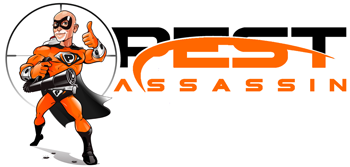In preparing for summertime and outdoor activities, it is wise to consider and prepare for those insects that can put a damper on outdoor fun. The German yellow jacket is one of the most serious threats to human health from a stinging pest. In fact, it is considered the most dangerous stinging pest in Indiana. There are other stinging pests such as the European Hornet and the Bald-Faced Hornet, but the yellow jacket is in a class of its
own. In most cases there is little to no danger to humans and pets who encounter this yellow and black stinging pest while it is foraging, however if the nest is threatened or disturbed, an all-out attack is imminent.
Yellow jackets can release an alarm pheromone which signals the
defenders of the nest that something is wrong, and war is declared. Nests of the yellow jacket species can be built in the ground in old root systems or even in abandoned chipmunk holes or built in walls, attics, crawlspaces or soffits. They may inhabit your lawn furniture or a play set in your backyard. What complicates searching out a yellow jacket nest is that they can be almost anywhere including cars that have not been driven in a while, cardboard boxes, or inside storage buildings. There is virtually no place that they will not build a nest.
The favorite food for yellow jacket wasps is insects. If insect food sources are limited, the wasp may turn to sweets like soft drinks, fruit juices and even candy to provide its energy source. For much needed protein in the diet, the wasp may turn to meat and even roadkill. This is the reason that wasps may hover around trash containers and picnic areas.
Here is a good tip for the reader. Since yellow jackets are foraging stinging pests, be aware of items that might be attractive to the wasp. Always keep outside trash containers clean with plastic liners. While picnicking, it is a great idea to cover drinks and keep food in plastic containers so as to not attract pests that might turn an enjoyable get together into an unforgettable occurrence.
